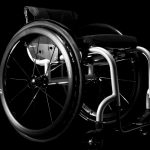The biggest and most prestigious Boccia event outside of the Olympics was held in Liverpool earlier this year. Boccia is a Paralympic sport with no Olympic equivalent. It is a target ball sport designed for athletes with impairments affecting all four limbs.
Boccia (pronounced Bot-Cha) was first introduced as a Paralympic sport in 1984. Athletes throw, kick or use a ramp to propel a ball onto the court with the aim of getting closest to a ‘jack’ ball. Each side has 6 leather balls containing plastic granules. This makes sure they don’t bounce but will roll. Each side has 6 balls (red or blue) and after they have all been thrown, one side receives points for every ball they have closer to the jack than their opponents’ closest ball.
Four classifications dependent on disability
The game is played indoors on a court similar in size to a badminton court. Players are divided into four classifications depending on their disability and functional ability:
- BC1 – Players with Cerebral Palsy who are able to use their hands or feet to consistently propel a ball into play. BC1 athletes may have an aide on court to pass them their ball before each shot
- BC2 – Players with Cerebral Palsy who are able to use their hands to consistently propel a ball into play and have greater functional ability than a BC1 athlete
- BC3 – Players with Cerebral Palsy or other disability with locomotor dysfunction in all four limbs who are unable to throw or kick a ball into play and as such are permitted to use an assistive device such as a ramp to propel the ball into play and are supported by an assistant (‘ramper’)
- BC4 – Players who do not have Cerebral Palsy but have another disability with locomotor dysfunction in all four limbs and have similar functional ability to BC2 athletes. Disabilities such as Muscular Dystrophy and Tetraplegia will fall under this classification
More information on Boccia and the World Championships.






Recent Comments